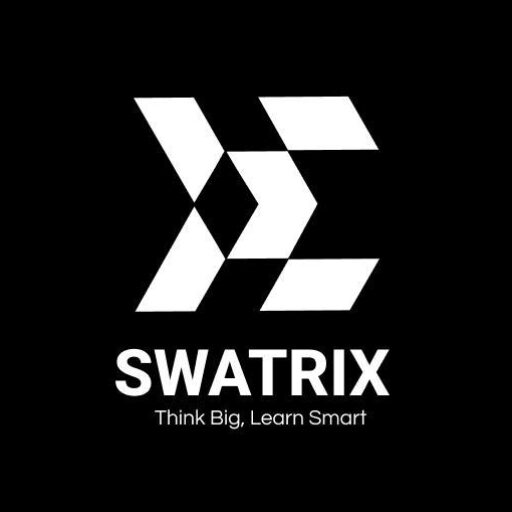IoT (Internet of Things)
The Internet of Things (IoT) refers to the network of interconnected devices that communicate and exchange data with each other over the internet. These devices, often embedded with sensors, software, and other technologies, can collect and share data, enabling them to perform various tasks autonomously or with minimal human intervention. IoT has applications across numerous industries, including smart homes, healthcare, agriculture, transportation, and industrial automation, driving efficiency, innovation, and improved decision-making.
Reviews 4.7 (253 user ratings):
4.721 students
Price:
₹ 5000/-
IoT systems typically consist of three main components: devices (sensors and actuators), connectivity (communication protocols), and data processing (cloud or edge computing). By leveraging IoT, organizations can monitor and control physical environments, optimize operations, and create new business models. However, IoT also presents challenges, such as security, privacy, and scalability, which must be addressed to fully realize its potential.

Course Descriptions :
"Introduction to IoT" provides an overview of the Internet of Things, including its architecture, components, and applications. Students learn about the role of sensors, connectivity, and data processing in IoT systems, as well as the impact of IoT on industries like healthcare, agriculture, and smart cities.
"IoT Architecture and Components" explores the structure of IoT systems, including devices, gateways, networks, and cloud platforms. Students learn how these components work together to enable seamless data collection, transmission, and analysis.
"Sensors and Actuators in IoT" covers the types of sensors and actuators used in IoT devices, such as temperature sensors, motion detectors, and motors. Students learn how these components collect data and interact with the physical world.
"IoT Communication Protocols" introduces the various protocols used for device communication, such as MQTT, CoAP, HTTP, and Zigbee. Students learn about the strengths and limitations of each protocol and how to choose the right one for specific IoT applications.
"IoT Connectivity Technologies" explores wireless and wired connectivity options for IoT, including Wi-Fi, Bluetooth, LoRaWAN, and cellular networks. Students learn how to select the appropriate connectivity solution based on range, power consumption, and data requirements.
"IoT Data Processing and Analytics" focuses on handling and analyzing the vast amounts of data generated by IoT devices. Topics include edge computing, cloud platforms, and tools for real-time data processing and visualization.
"IoT Security and Privacy" addresses the challenges of securing IoT devices and networks. Students learn about encryption, authentication, and best practices for protecting IoT systems from cyber threats and ensuring user privacy.
"IoT Device Management" covers the tools and techniques for managing large-scale IoT deployments. Topics include device provisioning, firmware updates, and remote monitoring to ensure optimal performance and reliability.
"IoT Platforms and Cloud Integration" introduces popular IoT platforms like AWS IoT, Google Cloud IoT, and Microsoft Azure IoT. Students learn how to connect IoT devices to cloud services for data storage, processing, and analysis.
"Edge Computing in IoT" explores the role of edge computing in reducing latency and improving efficiency in IoT systems. Students learn how to process data closer to the source, enabling faster decision-making and reducing bandwidth usage.
"IoT in Smart Homes" focuses on the application of IoT in home automation, including smart lighting, security systems, and energy management. Students learn how IoT enhances convenience, safety, and energy efficiency in residential environments.
"IoT in Healthcare" examines the use of IoT in medical devices, remote patient monitoring, and telemedicine. Students learn how IoT improves patient care, reduces costs, and enables early detection of health issues.
"IoT in Agriculture" explores how IoT is transforming farming practices through precision agriculture, soil monitoring, and automated irrigation systems. Students learn how IoT helps optimize resource usage and increase crop yields.
"IoT in Industrial Automation" covers the use of IoT in manufacturing and industrial processes, including predictive maintenance, asset tracking, and supply chain optimization. Students learn how IoT enhances efficiency and reduces downtime in industrial settings.
"IoT in Smart Cities" examines the role of IoT in urban infrastructure, including traffic management, waste management, and public safety. Students learn how IoT contributes to sustainable and efficient city operations.
"IoT Development Tools and Frameworks" introduces tools and frameworks for building IoT applications, such as Arduino, Raspberry Pi, and Node-RED. Students learn how to prototype and develop IoT solutions using these platforms.
"IoT Case Studies and Real-World Applications" provides practical examples of IoT implementations across various industries. Students analyze successful IoT projects to understand the challenges and best practices involved.
"IoT Projects" is a hands-on course where students apply their knowledge to real-world IoT scenarios. They work on projects such as building a smart home system, developing a health monitoring device, or creating an industrial IoT solution. The course emphasizes problem-solving, creativity, and collaboration, enabling students to showcase their skills and build a portfolio of impactful IoT projects.
This course includes:
- 30 hours on-demand video
- 6 months access
- Access on mobile and TV
- Free Webinar
- Certificate of completion
What Client Say Testimonials
Lorem ipsum dolor sit amet, consectetur adipiscing elit. Ut elit tellus, luctus nec ullamcorper mattis pulvinar.
- Best Conference
- 100% Certified & Trusted
- Enjoy 24/7 World Class Support




